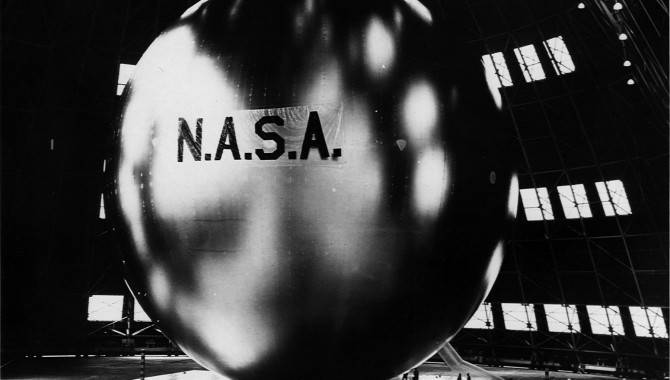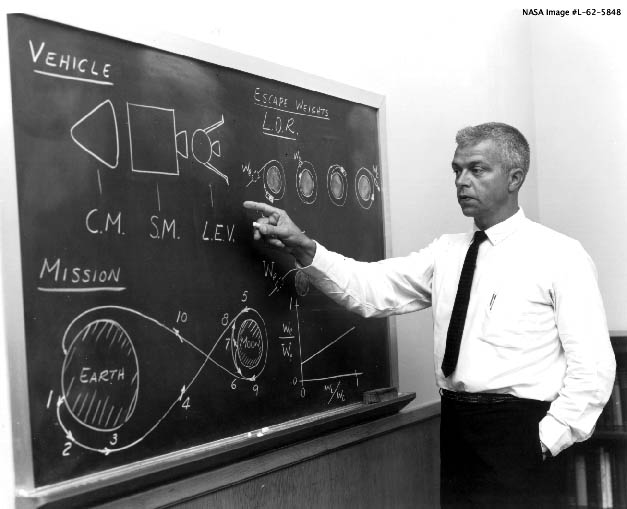
Echo 1 fully inflated. The balloon could be seen from the ground with the naked eye as it passed overhead. Credit: NASA
July 30, 2010 Vol. 3, Issue 7
August 2010 marks the 50th anniversary of the launch of the Echo 1 communication balloon.
Comedian Louis C.K. once observed that despite the advances in communication technologies, we often find frustration in even the slightest lag in cell phone signal. “Give it a second!” C.K. jokes. “It’s going to space! Would you give it a second to get back from space?”
Fifty years ago this month, NASA jump-started the telecommunication revolution with a balloon. Echo 1, conceived by Langley Research Center’s William O’Sullivan, was launched on August 12, 1960. Nicknamed the “satelloon,” the 100-foot wide Echo 1 was the world’s first communication satellite.
Made of an aluminized, Mylar polyester film the thickness of a human hair, Echo 1 carried 107.9 MHz telemetry beacon transmitters, powered by five nickel-cadmium batteries charged by 70 mounted solar cells. The balloon enabled voice communication between scientists at Bell Laboratories in Holmdel, New Jersey and a NASA facility in Goldstone, California. It also served as a transcontinental telephone, radio, and TV signal reflector, and accomplished scientific objectives by calculating atmospheric density.
Echo 1 earned its name based on the general “echo-like” principle of satellite communications: send a signal into space, bounce it off a satellite, and pick up the signal at a different location on Earth. Echo 1 was a passive satellite. Today’s communication satellites are active satellites, which amplify signals before returning them to Earth.
It took seven failed launches before Echo 1 successfully took to the skies in 1960. The first launch attempt resulted in headlines such as “Earthlings Stirred by NASA Balloon, Awesome Sight in the Sky” from a local newspaper when the balloon burst 60 miles above the ocean in the evening sky, the sun’s rays reflecting brilliantly off the pieces of shredded aluminized Mylar.
In 1964, NASA launched the second Echo satellite for passive communications. However, by the time it reached orbit, active satellite communications were gaining in popularity. In 1962, AT&T, in collaboration with NASA, launched the first active communications satellite, Telstar 1, which set a new paradigm for space-based telecommunications.
Echo 1 stayed afloat for eight years, returning to Earth on May 24, 1968. Described as possibly the most beautiful object ever to be put into space, the satelloon is remembered not only for changing the way we communicate, but also for demonstrating the peaceful and practical uses of space technology.
Read more about the history and lessons from Echo 1.
NASA APPEL Slideshow of Project Echo
View slideshow on Flickr, where you may click Show Info to see detailed image captions.
Echo 1 fully inflated. The balloon could be seen from the ground with the naked eye as it passed overhead.
Featured Photo Credit: NASA







